BuySellBA
Administrator
Open urbanizations: The model of living in the green - La Nacion Propiedades

Source:

 www.lanacion.com.ar
www.lanacion.com.ar
November 8, 2023
Microzones that have schools, medical centers and services proliferate, but on the outskirts; new real estate ventures accompany the trend; Who chooses these options and why?
By Mercedes Soriano
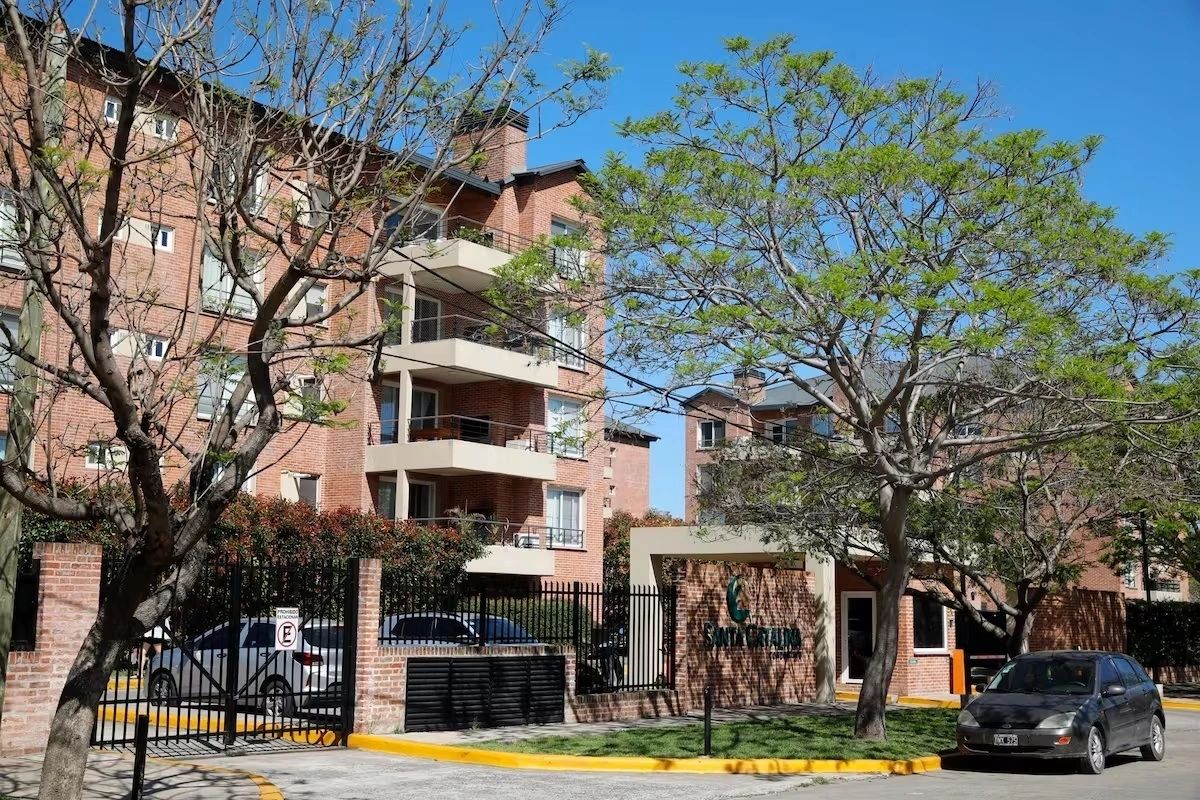
Almost replicating what happened in the past when houses did not have a gate, alarm or security cameras, open urbanizations are gaining followers with people who seek to live safely, but be close to everything, without isolating themselves or “locking themselves in” in a private neighborhood. The “city” model in the green is beginning to consolidate and real estate projects are making their mark in these microzones.
The concept is imposed in cities recognized for their high quality of life. “If you look at the case of Philadelphia or Denmark, they have open cities where security and public space prevail, where people are aware that this common part is their own and they have a sense of belonging,” says Magdalena Day, a developer from Salta with 20 years. years of experience, which has already advanced with 1,200 hectares under this paradigm.
With the impetus for decentralization resulting from the pandemic, 15-minute cities are a global trend. The mind behind this concept, the Colombian Carlos Moreno, defines: “It is delusional to say that we are going to lock citizens in their neighborhood. The 15-minute city is the opposite, where you can move freely around your neighborhood on foot or by bike, and then throughout the city by bike or public transportation, which is the means to connect the neighborhoods.”
Aligned with this way of thinking was the famous Argentine architect César Pelli. Opponent of living enclosed and a militant of living in open spaces, he said: “The inhabitant of an apartment building has security and when he goes down to the street he is in contact with the city, which does not happen in closed neighborhoods, a way of life.” which I frankly hate.”
Ricardo Cavanagh is one of the hundreds of buyers who recently purchased an apartment in one of the new projects flourishing in Buenavista, a 120-hectare open neighborhood in the northern part of Buenos Aires, steps from the Panamericana. “It seems to me that to make an investment in a new gated community you have to go many kilometers away, while these apartments bring you closer to the epicenter of where the northern area has developed in terms of service offers of all kinds,” he analyzes.
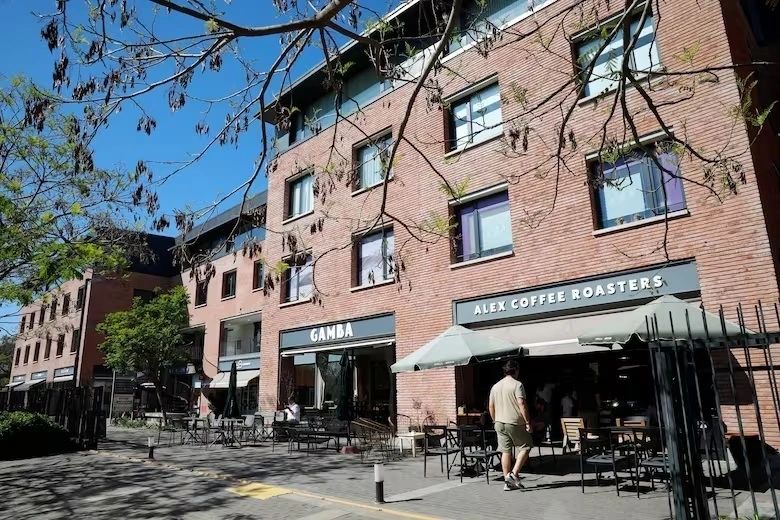
The proximity to stores and shops, one of the advantages that Buenavista residents highlight
Buenavista was born 40 years ago, the result of inspiration from the Swiss city Les Cèdres. “It has four guidelines that are key in a project: access, education, security and price,” explains Martín Mieres, who heads the real estate company of the same name and was one of the first to believe in the potential of the area.
The neighborhood is open, but it has a delimited area of operation that has residential complexes, three gated communities, three schools and a shopping center. There are at least four projects that are sold today, with sales completed in record time. “In four weeks, 210 units were reserved at a friends and family. We have never seen this level of sales in apartments,” says Martín Boquete, director of Toribio Achával, broker of the Open Buenavista venture. The most affordable tickets in the neighborhood cost US$2,000 per square meter, with financing options during the work.
For his part, Iván Achaval, president of Achaval Cornejo, is amazed by the absorption capacity that the area has, since around 500 units were launched and sold this year. Along these lines, he explains that those who buy not only see an attractive place to live but also to do business: “There is nothing for sale in the area, and what there is, sells at a high price. Not to mention the rent that is taken out of your hands. The offices respond to the same trend because they are all already placed and the vacancies already completed ask for US$4000/m².” In that sense, he explains the opportunity to revalue the well: “Buyers saw that today projects are sold at an average US$2,000 per square meter and they understand that the few finished units are sold at US$3,000/m² and buyers validate that price.”
“Those looking for a first home with service and infrastructure generally find it in a remote gated community, with expenses out of their reach. In this scenario, the couple has to have two cars to be connected to their children's schools or work. When open urbanizations are close to consolidated urban sections, they allow a solution for the family, since collaborative is more economical than exclusive,” says the developer.
Luciano Lorenzoni, Marketing Manager of the Proaco Group, agrees with this view: “The spirit of open urbanizations is that young families can access a lot and live in an urbanization with the benefits of a country such as security and infrastructure, but closer. From the pocket".
The holding company will invest US$500 million in Docta, a 600-hectare megadevelopment in Córdoba that plans to become a 15-minute city, where there are already more than a thousand families settled. Lands are sold from 250 square meters to US$30,000. The project includes a school, offices, a shopping center, a sports facility and hiking trails.
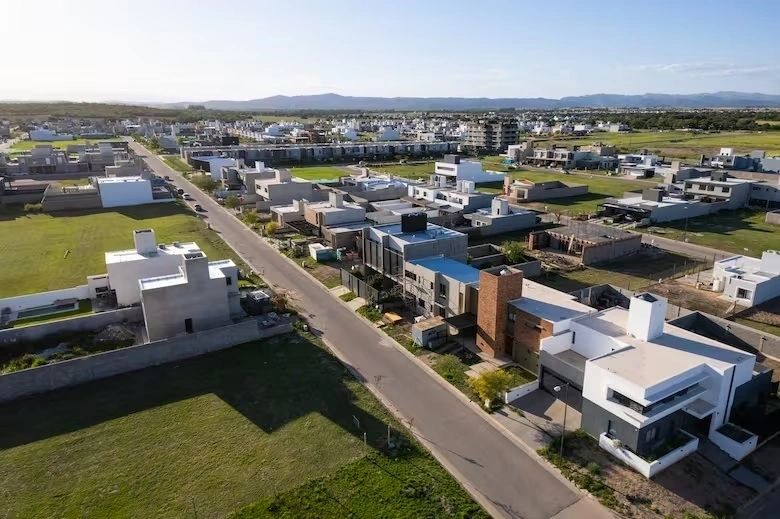
There are already more than a thousand families installed in Docta, a 600-hectare megadevelopment in Córdoba
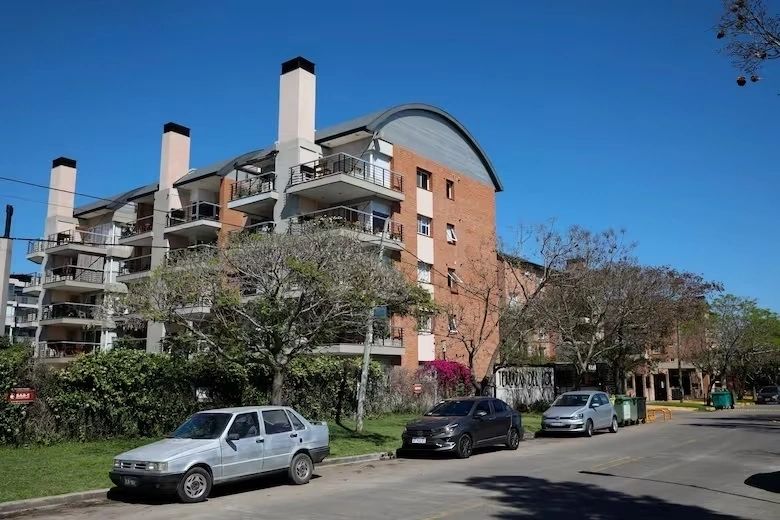
The entrance by car to Buenavista is limited to a single street, a way to control entry
Andrea is 48 years old and during the pandemic she decided to change her life with her partner. “I lived in the center of Córdoba but I moved to an urbanization so as not to lose the lifestyle and seek security,” she says. The formula is repeated in this development as well. “To enter, you have to travel a very long road, so everyone does it by car, and when they arrive at the entrance there is a system with a license plate reader to strengthen control of who enters and who leaves,” she describes.
Other original services are added to the usual services. In the case of Plaza Nogales, a new neighborhood opened in Malvinas Argentinas of 17 hectares, in addition to homes, offices, commercial premises and a medical center, there will be a community garden and a fresh produce market .

The Plaza Nogales project includes offices, commercial premises and a medical center, among other benefits
“There are urban planning philosophies that are going strong. The idea is that the people who live there take ownership of the public space, that people want to be on the street, that they use the space,” summarizes Soledad Pato, master in Urban Economics and consultant at Urban Vision. “If kids want to ride bikes and 80% of the streets are pedestrian, it's easier for that to happen,” she reasons.
The developments detect change and opportunity, such as the construction of typologies that are scarce in the area that adapt to new ways of living. In fact, the first building of the project is already finished and about to be delivered with units of 35 to 45 m², which were sold at a price from US$50,000 to US$65,000. One of the biggest bets is a new building, which is already underway, with larger units, a typology that is almost non-existent on those streets.
Lucas, a 35-year-old tenant, says he never considered living in a gated neighborhood. “Here I can have many meetings with friends, most of them are young and have the same concerns as me,” he explains.
Social life is a fundamental part of these three residents of Ayres Vila, a 15-year-old satellite city in Pilar at kilometer 43.5 of the Panamericana. It has gastronomic offerings, residential and corporate buildings, schools, health and entertainment centers.
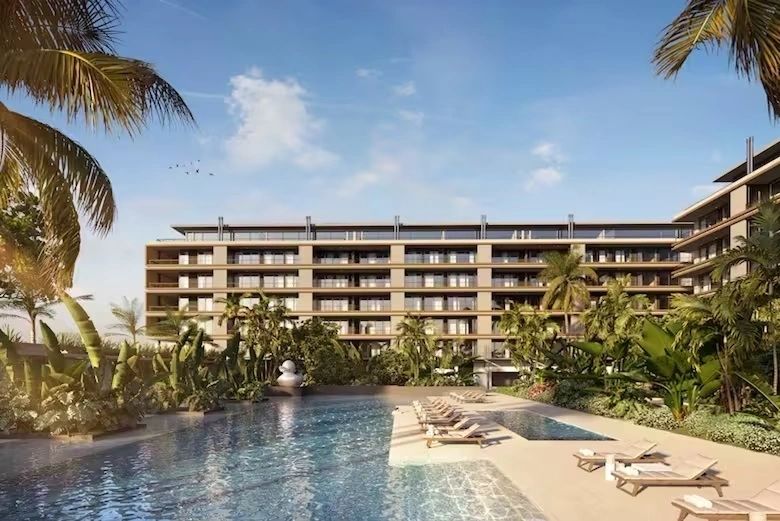
In Ayres Vila residential and corporate buildings coexist
The project is very close to completing 50% of its masterplan, which will involve “an investment of more than US$210 million and 90,000 square meters still remain to be built,” according to Javier Rius, general manager and partner of Ayres Desarrollos.
The projects are multiplying and residents value the change in life, especially the sense of belonging and the simplification of routine with all services within reach while still stepping on the green.
www.buysellba.com

Source:
Urbanizaciones abiertas: gana adeptos el modelo de vivir en el verde sin aislarse y a 15 minutos de todo
Proliferan las microzonas que cuentan con colegios, centros médicos y servicios, pero en las afueras; nuevos emprendimientos inmobiliarios acompañan la tendencia; quiénes eligen estas opciones y por qué
November 8, 2023
Open urbanizations: The model of living in the green without isolating yourself and 15 minutes from everything is gaining followers
Microzones that have schools, medical centers and services proliferate, but on the outskirts; new real estate ventures accompany the trend; Who chooses these options and why?
By Mercedes Soriano

Almost replicating what happened in the past when houses did not have a gate, alarm or security cameras, open urbanizations are gaining followers with people who seek to live safely, but be close to everything, without isolating themselves or “locking themselves in” in a private neighborhood. The “city” model in the green is beginning to consolidate and real estate projects are making their mark in these microzones.
The concept is imposed in cities recognized for their high quality of life. “If you look at the case of Philadelphia or Denmark, they have open cities where security and public space prevail, where people are aware that this common part is their own and they have a sense of belonging,” says Magdalena Day, a developer from Salta with 20 years. years of experience, which has already advanced with 1,200 hectares under this paradigm.
With the impetus for decentralization resulting from the pandemic, 15-minute cities are a global trend. The mind behind this concept, the Colombian Carlos Moreno, defines: “It is delusional to say that we are going to lock citizens in their neighborhood. The 15-minute city is the opposite, where you can move freely around your neighborhood on foot or by bike, and then throughout the city by bike or public transportation, which is the means to connect the neighborhoods.”
Aligned with this way of thinking was the famous Argentine architect César Pelli. Opponent of living enclosed and a militant of living in open spaces, he said: “The inhabitant of an apartment building has security and when he goes down to the street he is in contact with the city, which does not happen in closed neighborhoods, a way of life.” which I frankly hate.”
Ricardo Cavanagh is one of the hundreds of buyers who recently purchased an apartment in one of the new projects flourishing in Buenavista, a 120-hectare open neighborhood in the northern part of Buenos Aires, steps from the Panamericana. “It seems to me that to make an investment in a new gated community you have to go many kilometers away, while these apartments bring you closer to the epicenter of where the northern area has developed in terms of service offers of all kinds,” he analyzes.

The proximity to stores and shops, one of the advantages that Buenavista residents highlight
Buenavista was born 40 years ago, the result of inspiration from the Swiss city Les Cèdres. “It has four guidelines that are key in a project: access, education, security and price,” explains Martín Mieres, who heads the real estate company of the same name and was one of the first to believe in the potential of the area.
The neighborhood is open, but it has a delimited area of operation that has residential complexes, three gated communities, three schools and a shopping center. There are at least four projects that are sold today, with sales completed in record time. “In four weeks, 210 units were reserved at a friends and family. We have never seen this level of sales in apartments,” says Martín Boquete, director of Toribio Achával, broker of the Open Buenavista venture. The most affordable tickets in the neighborhood cost US$2,000 per square meter, with financing options during the work.
For his part, Iván Achaval, president of Achaval Cornejo, is amazed by the absorption capacity that the area has, since around 500 units were launched and sold this year. Along these lines, he explains that those who buy not only see an attractive place to live but also to do business: “There is nothing for sale in the area, and what there is, sells at a high price. Not to mention the rent that is taken out of your hands. The offices respond to the same trend because they are all already placed and the vacancies already completed ask for US$4000/m².” In that sense, he explains the opportunity to revalue the well: “Buyers saw that today projects are sold at an average US$2,000 per square meter and they understand that the few finished units are sold at US$3,000/m² and buyers validate that price.”
The union of two generations
The way of life promoted by open developments mainly attracts two segments: older couples going through the empty nest years and young couples looking for an affordable product. In fact, when Day started with this type of development, he did so with the idea of enhancing the chances of younger people to acquire a home.“Those looking for a first home with service and infrastructure generally find it in a remote gated community, with expenses out of their reach. In this scenario, the couple has to have two cars to be connected to their children's schools or work. When open urbanizations are close to consolidated urban sections, they allow a solution for the family, since collaborative is more economical than exclusive,” says the developer.
Luciano Lorenzoni, Marketing Manager of the Proaco Group, agrees with this view: “The spirit of open urbanizations is that young families can access a lot and live in an urbanization with the benefits of a country such as security and infrastructure, but closer. From the pocket".
The holding company will invest US$500 million in Docta, a 600-hectare megadevelopment in Córdoba that plans to become a 15-minute city, where there are already more than a thousand families settled. Lands are sold from 250 square meters to US$30,000. The project includes a school, offices, a shopping center, a sports facility and hiking trails.

There are already more than a thousand families installed in Docta, a 600-hectare megadevelopment in Córdoba
The secret ingredient
Security is an increasingly valued service and, for many, non-negotiable. That is why these urbanizations have restricted accessibility. In Buenavista, for example, entry to properties is limited to Uruguay Street. Something similar happens on La Isla de Olivos, an open microzone with buildings of up to 18 floors, which is accessed through a single entrance and has a single exit. This modality, according to specialists, protects residents. “It is a very residential neighborhood with large units, buildings that were designed when amenities and private security began to be incorporated,” says Maximiliano D'Aria, director of D'Aria Propiedades.
The entrance by car to Buenavista is limited to a single street, a way to control entry
Andrea is 48 years old and during the pandemic she decided to change her life with her partner. “I lived in the center of Córdoba but I moved to an urbanization so as not to lose the lifestyle and seek security,” she says. The formula is repeated in this development as well. “To enter, you have to travel a very long road, so everyone does it by car, and when they arrive at the entrance there is a system with a license plate reader to strengthen control of who enters and who leaves,” she describes.
Other original services are added to the usual services. In the case of Plaza Nogales, a new neighborhood opened in Malvinas Argentinas of 17 hectares, in addition to homes, offices, commercial premises and a medical center, there will be a community garden and a fresh produce market .

The Plaza Nogales project includes offices, commercial premises and a medical center, among other benefits
“There are urban planning philosophies that are going strong. The idea is that the people who live there take ownership of the public space, that people want to be on the street, that they use the space,” summarizes Soledad Pato, master in Urban Economics and consultant at Urban Vision. “If kids want to ride bikes and 80% of the streets are pedestrian, it's easier for that to happen,” she reasons.
The developments detect change and opportunity, such as the construction of typologies that are scarce in the area that adapt to new ways of living. In fact, the first building of the project is already finished and about to be delivered with units of 35 to 45 m², which were sold at a price from US$50,000 to US$65,000. One of the biggest bets is a new building, which is already underway, with larger units, a typology that is almost non-existent on those streets.
Live among friends
“It is a building that has a lot of movement, especially with young people, and I love that,” says Francisca, a 23-year-old tenant. “ It makes me more comfortable living here because we are almost a community of friends,” agrees Daniela, the 38-year-old owner.Lucas, a 35-year-old tenant, says he never considered living in a gated neighborhood. “Here I can have many meetings with friends, most of them are young and have the same concerns as me,” he explains.
Social life is a fundamental part of these three residents of Ayres Vila, a 15-year-old satellite city in Pilar at kilometer 43.5 of the Panamericana. It has gastronomic offerings, residential and corporate buildings, schools, health and entertainment centers.

In Ayres Vila residential and corporate buildings coexist
The project is very close to completing 50% of its masterplan, which will involve “an investment of more than US$210 million and 90,000 square meters still remain to be built,” according to Javier Rius, general manager and partner of Ayres Desarrollos.
The projects are multiplying and residents value the change in life, especially the sense of belonging and the simplification of routine with all services within reach while still stepping on the green.
www.buysellba.com

